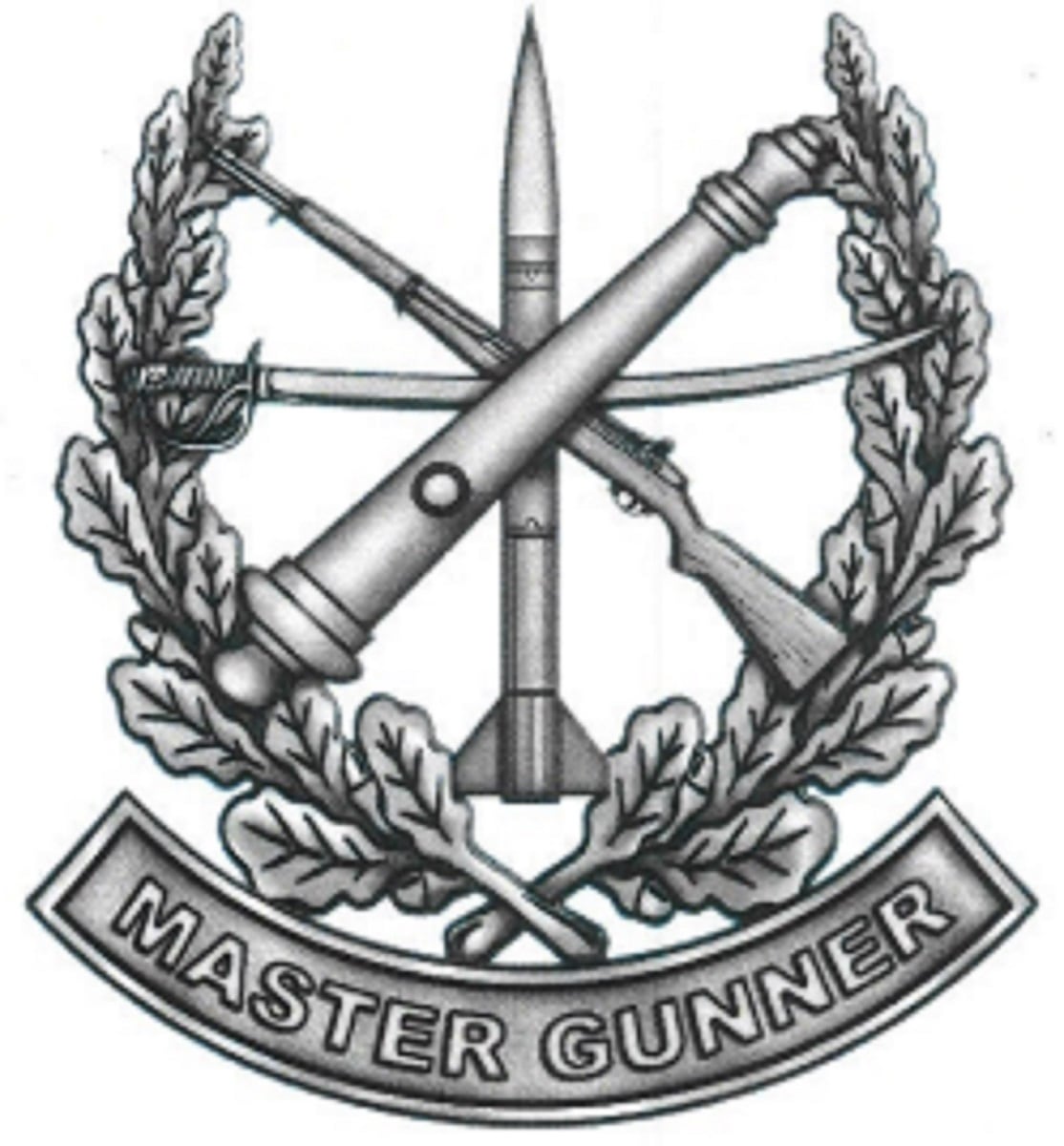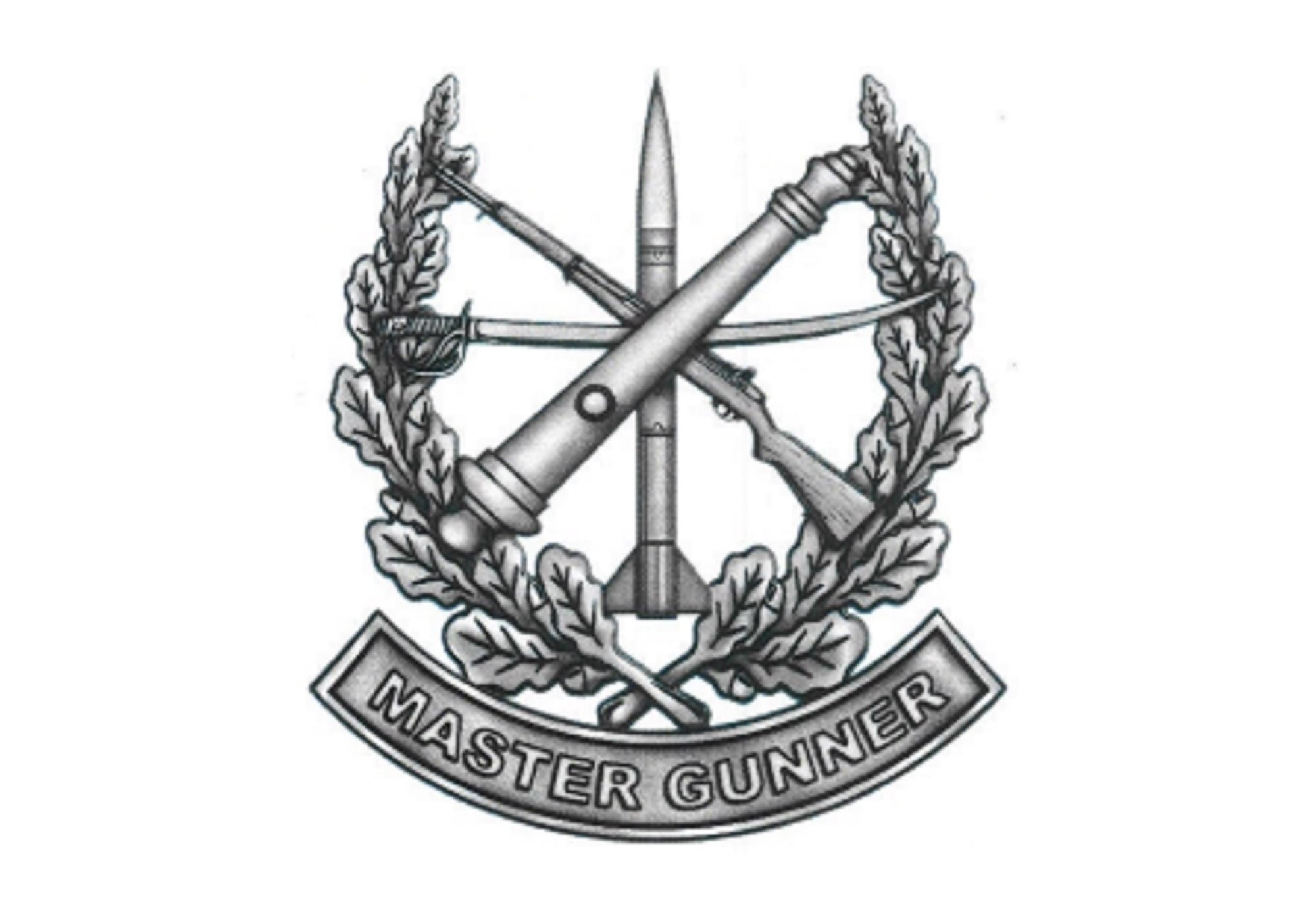The first batch of graduates of key Army fires schools are now wearing one of the Army’s newest badges to display their master gunner skills. Many more can now apply to receive theirs, retroactively.
Nine soldiers at Fort Benning, Georgia, recently earned the Master Gunner Identification Badge, according to an Army video news release.
The badge was first approved by the Army’s acting assistant secretary for manpower and reserve affairs in January 2018. It is retroactive to October 1975, according to the original Miper message 19-144.
RELATED

One of the recipients, Staff Sgt. Kenneth Bowman, with the 1st Battalion of the 81st Artillery Regiment, said in the video that his love of training soldiers drove him to improve his expertise in his job as a master gunner.
“It’s an honor to get awarded this badge in front of my peers, friends, family, my chain of command. A lot of people come to let me know they’re proud of me and my accomplishment,” Bowman said.
Though the process began in 2018, it wasn’t until May 2019 that the badge’s approval was finalized. The delay to awarding the badge was built into the May message, when officials ordered that division commanders may approve awards of the MGIB “up to six months from the release date of this message.”
Then, retroactive requests for current members must be submitted through the commandant of the corresponding school.
The MGIB is confined to the enlisted soldiers who have the A7, A8, J3, K7, K8, R8 or T4 ASIs in their records, while warrant officers require the H8. The badge must be awarded by the authority who puts on the qualification course.
The authorities are the U.S. Army Field Artillery, Armor, Air Defense Artillery or Infantry Schools or the Aviation Center of Excellence.
Those courses include the following:
- Field Artillery Master Gunner Course
- Master Gunnery-M1/M1A1 Tank Course
- Infantry Fighting Vehicle Master Gunner Course
- Avenger Master Gunner Course
- M1A2 SEP Master Gunner Course
- Stryker Master Gunner Course
- Patriot Master Gunner Course
An Army memo released in 2018 outlined what it takes to be a master gunner, that includes a “high level of technical competence and a detailed understanding of a projectile producing system that [aids] a command in planning, resourcing, training and executing a gunnery program designed to enhance the combat effectiveness and lethality of a maneuver force.”
The badge includes a laurel wreath to represent the maneuver force, inside the wreath a sabre highlights the Armor branch, while the Springfield M1 rifle represents the Infantry and the crossed cannons mark the field Artillery branch and the missile at the center is for the Air Defense Artillery branch.
Shortly after the May announcement. Sgt. 1st Class Aaron M. Smith authored a historical piece in the NCO Journal published by Army University Press on the background of the master gunner and the new badge identifier.
Smith noted that Samuel Sharpe was appointed the master gunner in the Massachusetts Bay Colony, the first such gunner in North America.
“His duties were to ‘deliver powder and ammunition to select towns, recover weapons from militia members, receive payment from those who lost weapons, and provide periodic reports to government officials to guide the purchase of firearms, powder, and shot,’” Smith wrote.
That job played a role for the next nearly 400 years. During the Vietnam War, then-Army Chief of Staff Gen. Creighton Abrams ordered the Armor School to study ways to improve proficiency and readiness in the Armor branch. Commanders responded that they needed expert knowledge on the weapons systems to develop property training and employment of those systems.
So, the role of a direct advisor program was established. The Armor Master Gunner Course’s first class graduated 15 non-commissioned officers in December 1975. In 1981, the first Bradley Master Gunner Course was designed at Fort Benning to improve mechanized infantry tactics.
In 2004, the Air Defense Artillery branch put out the Patriot Master Gunner Course.
That was borne from observations on the initial stages of Operation Iraqi Freedom, according to Sgt. Maj. Robert S. Rodgers, a Patriot Master Gunner, wrote in the January-February edition of “Fires.”
“The complex and highly fluid Operation Iraqi Freedom (OIF) battlefield, with its crowded airspace and high risk of ground-to-air fratricide, illuminated the requirement for increased Patriot system and tactical expertise as well as greater situational awareness,” Rodgers wrote.
Todd South has written about crime, courts, government and the military for multiple publications since 2004 and was named a 2014 Pulitzer finalist for a co-written project on witness intimidation. Todd is a Marine veteran of the Iraq War.





